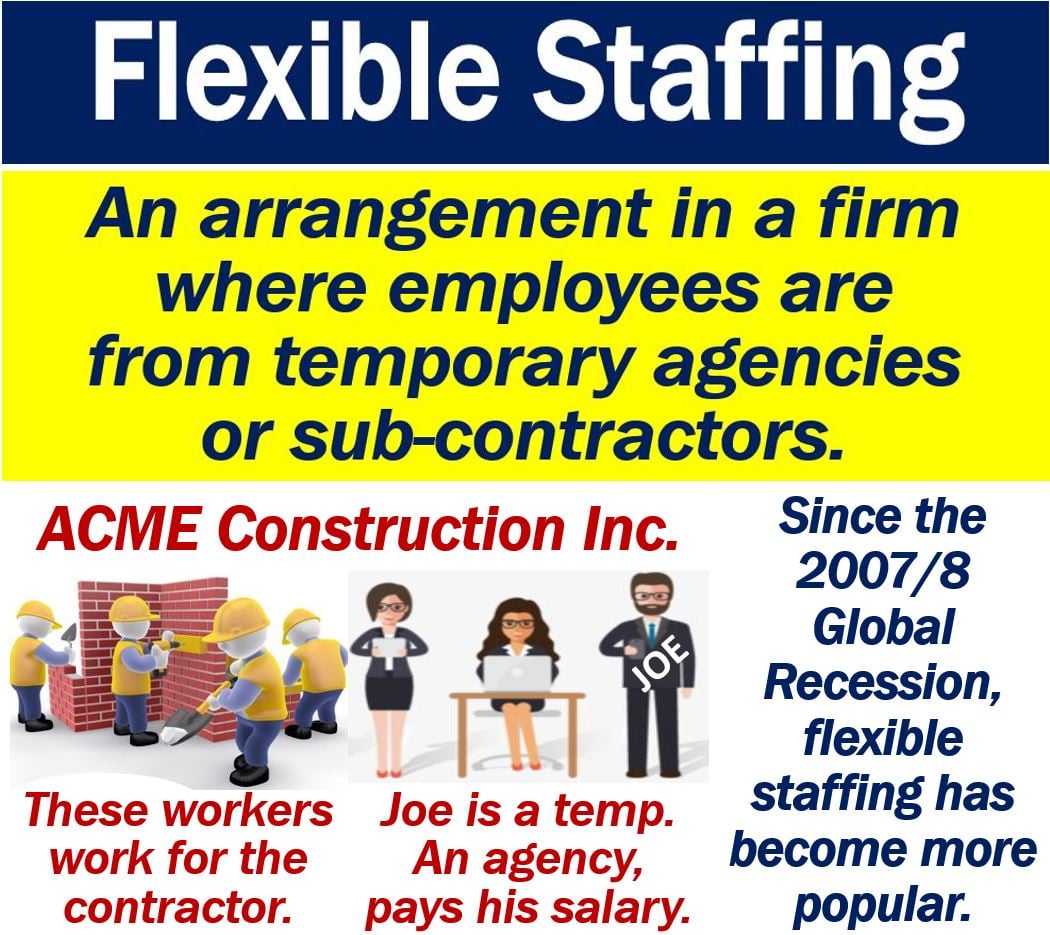What is flexible staffing? Definition and examples
Flexible staffing is an alternative to hiring permanent employees. It is a practice to fill job vacancies. The employer hires part-time workers, temporary employees, or independent contractors to fill staff vacancies. The employer subsequently does not have to adhere to the restrictions and legal requirements of permanent workers. The commitment with temporary or part-time employees, and also with independent contractors is much less.
For some employers, flexible staffing is also cheaper than employing full-time workers. For others, on the other hand, it can work out more expensive.
Mighty Recruiter says the following regarding flexible staffing:
“[The employer hires] independent contractors, part-time employees, or temporary employees to fill a staff out.”
The advantages are that there are fewer restrictions and legal requirements when working with these kinds of employees and the commitment is much less.”
Flexible staffing does not mean an alternative to the traditional working day of nine-to-five – that is flexible schedule.

Flexible staffing options
There are many options for flexible staffing. We have listed some of them below:
Temporary Agencies
The employer gets its workers from temporary agencies. The ‘temps’ work for a limited period in the company. The employer, not the agency, pays the workers their wages.
In most countries, the definition of ‘limited period’ is less than twelve months.
Employers may use temporary agencies for a limited period or perpetually.
Leased employees
The employer leases a portion of its workforce from an agency. Some companies use Elite Force Staffing for their whole workforce. They may do this on a permanent basis or for limited periods.
Even though the workers receive orders from the client, the agency pays them their wages.
Contract workers
The employees work for a sub-contractor. A sub-contractor is a company that contracts out its services to another company (client).
When the sub-contractor has completed the job, its relationship with the client ends. The workers, who work for the contractor, then leave the client’s premises and work on another job for another client.
The sub-contractor pays the workers’ wages. The workers are the sub-contractor’s employees.
Temporary employees
The employer finds and recruits these workers. However, they work on a temporary basis. For example, a retailer may take on additional workers just for the weeks leading up to Christmas.
Flexible staffing pros
The advantages of this type of staffing are mainly for the employer, while the disadvantages are for the worker.
Advantages
- The amount of overtime that workers have to do is less. Subsequently, labor costs are lower.
- In a flexible staffing environment, labor efficiency tends to be high.
- When agencies do the hiring and firing, the employer or client saves time and money.
- Terminating employees does not cost anything. Firing permanent workers can be expensive.
- Maintaining the workforce costs less.
Disadvantages
- Fewer employee benefits. The employee probably has no company health insurance or retirement plan.
- Problems keeping good workers. The worker will jump at the first employer who offers him or her a permanent job with benefits. This is not good for the employer.
- Low pay. This is clearly a disadvantage for the worker. Employees who work on a flexible or temporary basis usually get less per hour than their permanent counterparts.
Regarding low wages, BizFluent.com writes:
“According to the U.S. Department of Labor, ‘workers in these arrangements are much more likely to earn wages that are at or near the minimum wage and to earn significantly less than regular workers.'”
“As a result, many of these workers are working at or near poverty-level.”
Flexible workforce
If you want a flexible workforce, flexible staffing is an effective option.
A flexible workforce, in this context, is a workforce that grows/shrinks according to sales volumes. In other words, when sales rise, the workforce grows. Conversely, when sales shrink, so does the workforce.

